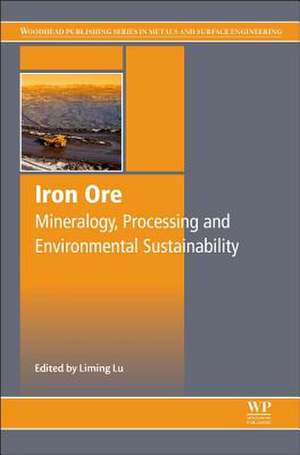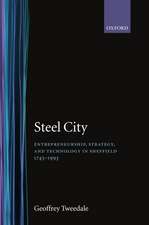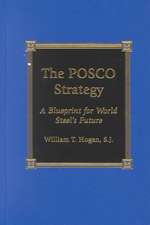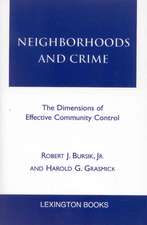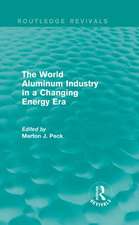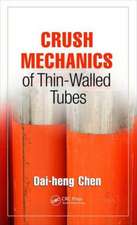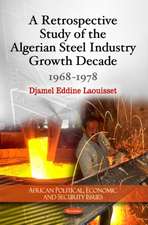Iron Ore: Mineralogy, Processing and Environmental Sustainability
Editat de Liming Luen Limba Engleză Hardback – 19 iul 2015
The text is an ideal reference on the topic during a time when iron ore production has increased significantly, driven by increasing demand from countries such as India and China.
- Provides a comprehensive overview of the global iron ore industry, exploring its characteristics and characterization
- Expert analysis of quality requirements for iron production, iron ore agglomeration technologies, environmental issues, and low-emission technologies
- Timely text to accompany the increased iron ore production occurring in developing countries like India and China
| Toate formatele și edițiile | Preț | Express |
|---|---|---|
| Paperback (1) | 1624.39 lei 36-50 zile | |
| ELSEVIER SCIENCE – 8 dec 2021 | 1624.39 lei 36-50 zile | |
| Hardback (1) | 1112.44 lei 36-50 zile | |
| ELSEVIER SCIENCE – 19 iul 2015 | 1112.44 lei 36-50 zile |
Preț: 1112.44 lei
Preț vechi: 1222.46 lei
-9% Nou
Puncte Express: 1669
Preț estimativ în valută:
212.93€ • 231.37$ • 178.98£
212.93€ • 231.37$ • 178.98£
Carte tipărită la comandă
Livrare economică 14-28 aprilie
Preluare comenzi: 021 569.72.76
Specificații
ISBN-13: 9781782421566
ISBN-10: 1782421564
Pagini: 666
Dimensiuni: 152 x 229 x 38 mm
Greutate: 1.2 kg
Editura: ELSEVIER SCIENCE
ISBN-10: 1782421564
Pagini: 666
Dimensiuni: 152 x 229 x 38 mm
Greutate: 1.2 kg
Editura: ELSEVIER SCIENCE
Public țintă
Industry professionals and academics in the field of iron ore extraction and processing companies, iron making companies; steel processors; academic metallurgistsCuprins
- List of Contributors
- Preface
- 1: Introduction: overview of the global iron ore industry
- Abstract
- 1.1 Introduction
- 1.2 Iron ore mining operations by country
- 1.3 Technology status and challenges
- 1.4 Iron ore outlook
- Part One: Characterization and analysis of iron ore
- 2: Mineralogical, chemical, and physical characteristics of iron ore
- Abstract
- 2.1 Introduction
- 2.2 Mineralogy
- 2.3 Chemical composition
- 2.4 Physical properties
- 2.5 Future trends
- 3: XRD analysis and evaluation of iron ores and sinters
- Abstract
- 3.1 Introduction
- 3.2 Principles of powder X-ray diffraction
- 3.3 Rietveld analysis
- 3.4 Sources of error in XRD analysis
- 3.5 Applications of cluster analysis
- 3.6 Applicability of XRD analysis
- 3.7 Use of mass balancing in iron ore analysis
- 3.8 The principal minerals and phases
- 3.9 XRD for the characterization of Iron ores
- 3.10 XRD in sintering and pelletizing
- 3.11 Summary and conclusions
- 4: Automated optical image analysis of natural and sintered iron ore
- Abstract
- 4.1 Introduction: Overview of optical image analysis technique
- 4.2 Mineralogical characteristics of iron ore and sinter
- 4.3 Automated optical image analysis (OIA)
- 4.4 Application of automated OIA to natural and sintered iron ore
- 5: Quantitative analysis of iron ore using SEM-based technologies
- Abstract
- 5.1 Introduction
- 5.2 Principles of SEM-based technologies
- 5.3 Application of automated SEM-based technologies to ore characterization
- 5.4 Characterization of natural and sintered iron ore using QEMSCAN
- 5.5 Summary
- 5.6 Future trends
- 6: Characterization of iron ore by visible and infrared reflectance and, Raman spectroscopies
- Abstract
- 6.1 Introduction
- 6.2 Principles of reflectance and Raman spectroscopies
- 6.3 Technologies
- 6.4 Reflectance and Raman spectroscopies of iron ore minerals
- 6.5 Future trends
- 2: Mineralogical, chemical, and physical characteristics of iron ore
- Part Two: Extraction, comminution, separation, and beneficiation of iron ore
- 7: Iron ore extraction techniques
- Abstract
- 7.1 Introduction
- 7.2 Iron ore mining—an historical UK context
- 7.3 Underground iron ore mining: Kiruna, Sweden
- 7.4 Modern-day surface mining: the Pilbara deposit
- 7.5 Modern day surface mining: iron ore in Minas Gerais Province, Brazil
- 7.6 Conclusions
- 8: Developments in iron ore comminution and classification technologies
- Abstract
- 8.1 Introduction
- 8.2 Iron ore crushing and screening
- 8.3 Iron ore grinding and classification
- 8.4 Future trends in iron ore comminution and classification
- 9: Developments in the physical separation of iron ore: magnetic separation
- Abstract
- 9.1 Introduction
- 9.2 Principle of magnetic separation
- 9.3 Magnetic separators
- 9.4 Typical flow sheets for iron ore separation
- 9.5 Challenges and recent advances in magnetic separation
- 9.6 Summary
- 10: Developments in nonmagnetic physical separation technologies for hematitic/goethitic iron ore
- Abstract
- 10.1 Physical processing for enhanced chemical and/or physical properties
- 10.2 Dense medium separation
- 10.3 Jigging
- 10.4 Upflow classification
- 10.5 Spiraling for iron ore beneficiation
- 11: Developments in the physiochemical separation of iron ore
- Abstract
- 11.1 Introduction
- 11.2 Mineral properties
- 11.3 Iron ore flotation
- 11.4 Key challenges and future directions
- 12: Developments in chemical separation of iron ore
- Abstract
- 12.1 Introduction
- 12.2 Phosphorus removal
- 12.3 Removal of silicon, aluminum, and sulfur minerals
- 12.4 Summary and future trends
- 13: Application of biotechnology in iron ore beneficiation
- Abstract
- Acknowledgments
- 13.1 Introduction
- 13.2 Microbial adhesion to mineral surfaces
- 13.3 Bioleaching for phosphorus removal from iron ores
- 13.4 Biobeneficiation of sulfide ores
- 13.5 Biobeneficiation of iron ore
- 13.6 Future trends
- 7: Iron ore extraction techniques
- Part Three: Iron ore agglomeration processes and blast furnace iron-making technology
- 14: Iron ore sintering
- Abstract
- Acknowledgments
- 14.1 Introduction
- 14.2 Effect of iron ore characteristics on sintering
- 14.3 Evaluation of iron ore for the sintering process
- 14.4 Recent developments in iron ore sintering
- 14.5 Conclusions
- 15: Iron ore pelletization
- Abstract
- 15.1 Introduction
- 15.2 Specification requirements of pellet feed
- 15.3 Green ball formation and properties
- 15.4 Induration of green pellets
- 15.5 Quality requirements for fired pellets
- 15.6 Conclusions
- 16: Quality requirements of iron ore for iron production
- Abstract
- Acknowledgments
- 16.1 Introduction to ironmaking technologies
- 16.2 Quality requirements of iron ore for the BF ironmaking process
- 16.3 Quality requirements of iron ore for alternative ironmaking processes
- 16.4 Summary
- 17: Recent developments in blast furnace iron-making technology
- Abstract
- 17.1 Introduction
- 17.2 Blast furnace design and facilities
- 17.3 Blast furnace process
- 17.4 Key innovations and future trends
- 14: Iron ore sintering
- Part Four: Environmental issues and low emission technologies
- 18: Sintering emissions and their mitigation technologies
- Abstract
- 18.1 Introduction
- 18.2 CO2 emissions and their mitigation
- 18.3 SOx emissions and their mitigation
- 18.4 NOx emissions and their mitigation technologies
- 18.5 Dioxin emissions and their mitigation
- 18.6 Dust emissions and their reduction
- 18.7 Utilization of biomass materials in iron ore sintering
- 18.8 Conclusions
- 19: Utilization of biomass as an alternative fuel in ironmaking
- Abstract
- 19.1 Introduction
- 19.2 Potential applications of biomass-derived materials and impact on net GHG emissions
- 19.3 Physical and chemical properties of biomass-derived chars to optimize ironmaking operations
- 19.4 Economic sources of biomass fuel
- 19.5 Pyrolysis of biomass for ironmaking applications
- 19.6 Applications in ironmaking
- 19.7 Future trends
- 19.8 Sources of further information and advice
- 20: Life cycle assessment of iron ore mining and processing
- Abstract
- 20.1 Introduction
- 20.2 Iron ore mining and processing
- 20.3 Application of LCA to iron ore mining and processing
- 20.4 Using LCA to reduce energy and GHG impacts
- 20.5 Conclusions
- 20.6 Sources of further information and advice
- 18: Sintering emissions and their mitigation technologies
- Index
